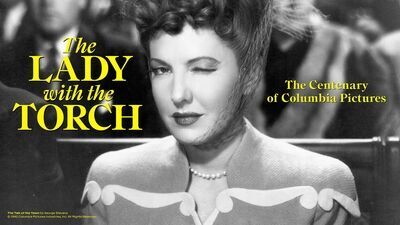“Let Us Reside” (1939)

Anytime I see Henry Fonda on display screen, it is a jarring expertise. Not as a result of he isn’t an unbelievable actor. I’m simply awestruck by how his naturalistic fashion is thus far forward of his contemporaries. Whereas 1939 was a banner 12 months for Fonda — that includes starring roles in “Jesse James,” “Drums Alongside the Mohawk,” and “Younger Mr. Lincoln” — its director John Brahm’s “Let Us Reside” of the identical 12 months that offers a full accounting of Fonda’s unbelievable vary.
He begins the movie within the picture of his soft-spoken everyman persona as Brick Tennant, an optimistic cab driver making ready to wed Mary Roberts (Maureen O’Sullivan). His world is turned the wrong way up, nonetheless, when an outdated pal — Joe Linden (Alan Baxter) — arrives on the lookout for a job and a spot to crash. Brick hires Joe, loaning him an outdated cab that Joe, with a ruthless gang, makes use of to stage a number of robberies. The thefts lead again to Brick, placing him on loss of life row with Joe whereas Mary groups with Lieutenant Everett (Ralph Bellamy) to clear Brick’s title. This movie takes a tough take a look at capital punishment and critiques the inequities of the justice system. And whereas the precise investigation is irritating, that’s sorta the purpose: The system is so intent on discovering a wrongdoer, it haphazardly factors the finger at Joe. The hopelessness of Brick’s plight causes the as soon as genial man to vary. By the tip, Fonda is a totally totally different individual — draped in an uncontrollable rage that foreshadows the later darkened flip he’d absorb “As soon as Upon a Time within the West.”
“Ladies Beneath 21” (1940)

An enchanting entry within the “girls’s image” subgenre, Max Nosseck’s “Ladies Beneath 21” is a morality play that’s easy sufficient. Frances White Ryan (Rochelle Hudson) returns to her downtrodden neighborhood following a jail sentence in connection together with her gangster husband Smiley Ryan (Bruce Cabot). Frances needs to go straight, however the older, conservative girls in her neighborhood gained’t overlook her previous. In the meantime, Frances’ sister Jennie (Tina Thayer), together with Jennie’s younger cohort, need Frances’ fantastic garments and life-style. They determine on a lifetime of crime, regardless of their idealistic instructor Johnny Crane (Paul Kelly) believing they’re able to extra. The women’ legal methods ultimately result in tragedy, in a scene so surprising in its violence, it brought about your entire theater to audibly gasp. Nosseck’s image is extra didactic than you’d like, and options some canned performances — however it’s a compact, nifty movie nonetheless.
“Beneath Age” (1941)

Whereas “Ladies Beneath 21” is likely to be a tad too ‘afterschool particular’ to be exhausting hitting, Edward Dmytryk’s “Beneath Age” is so in your face I virtually mistook it for a Pre-Code. Dmytryk’s arresting mix of social points and exploitation — a line he would leap backwards and forwards over all through his profession, significantly with “The Sniper” (1952) — pushes this movie to the bounds of the censors. One other “girls’s image,” it supposes a problem afflicting America’s highways and byways: roadside motels utilizing younger girls to lure male drivers for a very good time. Sisters Jane (Nan Gray) and Edie Baird (Mary Anderson) are employed by one such chain owned by Mrs. Burke (Leona Maricle) following their launch from jail. Whereas the older, accountable Jane catches the attention of bijou inheritor Rocky Stone (Tom Neal), her youthful sister Edie — drunk off the cash, fantastic garments, and a spotlight afforded by her salacious commerce — falls for Mrs. Burke’s violent right-hand-man Faucet Manson (Alan Baxter). Surprisingly the movie does greater than allude to those girls as prostitutes, and options an extremely grotesque homicide that left my mouth agape. Its theme of collective empowerment is stirring; its use of shadows is evocative; its consciousness of the physique to enrapture is startling. This movie looks like one of many actual discoveries from the collection.



















